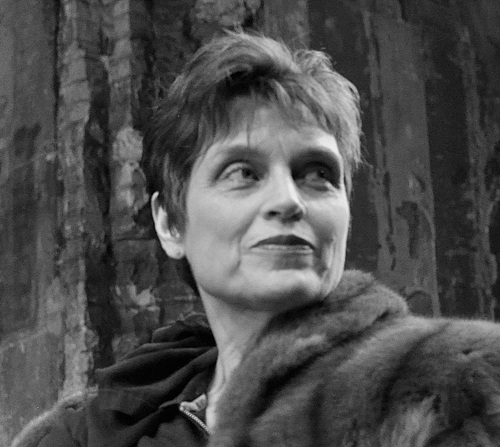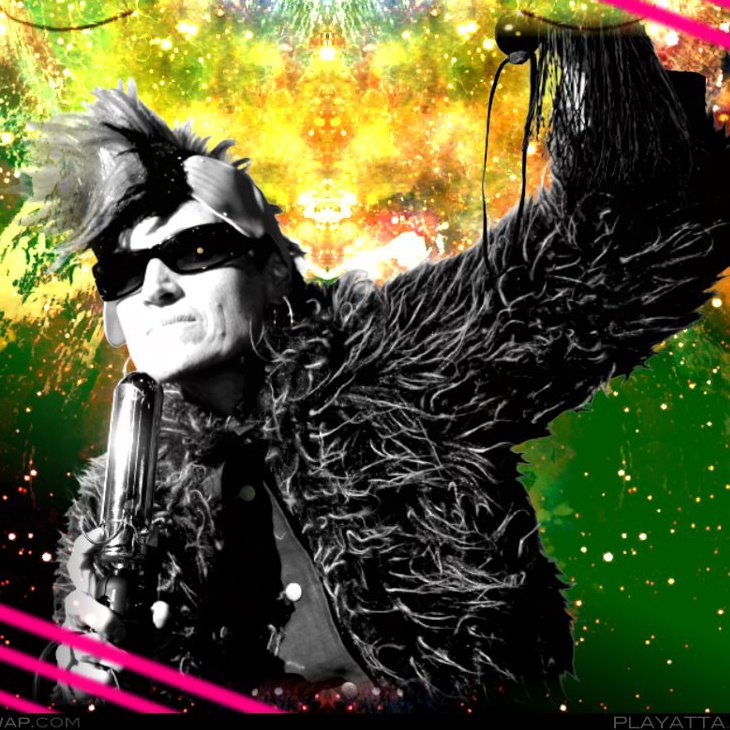Seeking Judith Howard: the week in local dance
For this week's column, Lightsey Darst profiles longtime Twin Cities dancer and choreographer, Judith Howard -- "there's hardly anyone in the dance scene who influences from so many angles," she says. "Howard's touch shows up all over."


THE WOMAN ACROSS FROM ME WEARS SILVER HOOP EARRINGS, a terra cotta shawl-sweater draping her expressive form, and a big technical-looking watch. Strong-featured, with avid green-sea eyes and hair bobbed and sharply banged, she makes the rest of the people in this quietly chic coffee shop look like mice in pajamas. There’s no mistaking Judith Howard. That’s what I think when I see her—and if you’re looking you’ll see her, or flashes of her, all over. There’s hardly anyone in the dance scene who influences from so many angles. As a performer, as a teacher of both movement and composition (Mad King Thomas and Emily Gastineau are both former students), as a choreographer, as a person who makes things happen—Howard’s touch shows up all over.
But what is that touch? Unlike some, she doesn’t diffuse a single thought across the landscape. I think of her performances/installations/parties with April Sellers, Sap Rising and House of Big Love: rose petals strewn over a day bed where a couple who met that night are necking, Morgan Thorson DJing a roomful of shimmy, traipsing through a house turned to a flow of embraces and red plush to tumble out into the backyard, where Howard and Sellers roll nude in some new-turned dirt, waking up their neighbors. Or, I think of Mad King Thomas’s delicious flesh-and-mind mischief: Monica Thomas , in Eat Up Little Pearl, wriggling a dead fish out of her mermaid tail. Or, Howard that same night, an embodiment of the sea with her own yards-long mermaid tail of garbage, turning her head to look at everyone with her chatoyant stare (wounded or inviting or challenging, always glancing slightly aside), her trash headdress teetering. Or, I think of how, seemingly in the space of fifteen minutes, Nic Lincoln went from being a dancer I could take or leave to one I can’t keep my eyes off, all during Dressage, the magnificent 2011 Fringe Festival solo Howard made for him. Or, I think of her 2008 Choreographers’ Eve performance–an acre of orange fur and a flourish of gold foil.
A patch of this fur, it turns out, hid in Howard’s basement for years until she realized she wanted to cover a stage with it. “I wanted to cover the whole audience, but it was too expensive,” she says. Her last performance, an installation/dance at Gamut Gallery this past August, featured rope. Why? One day she was sitting in her office at work (she’s a professor of dance at Carleton College), and “I saw this rope go by. It was charged,” and so she thought, “Rope is in my future.”
“I operate a lot like that,” she says, with her intuition and antennae out for inspirations, details, opportunities—like the show at Gamut, or Lincoln’s solo, both of which she was asked to do, and neither of which she initially knew what to do with. But once Howard starts assembling her work, a more rigorous process begins. She spent a year watching Lincoln before they began to work together; for the gallery show, she spoke to Ash Marlene Hane, the printmaker whose work was on display at the time, and researched printmaking. Howard’s research tends both to back up and talk back to her intuitions: the rope became an echo of the pressure of printmaking, moving and arranging the audience like ink on a plate.
Though maybe I shouldn’t talk of a “more rigorous process,” as if Howard’s intuitions were idle. They’re not; she’s constantly looking around, picking up this or that, trying it on (often literally; fashion is a big inspiration). “I’m a scavenger, that’s what it is,” she says—and being a scavenger on this level requires a certain discipline, a combination of magpie-eye and zen mind. This allows her to pick up highly laden images—Lincoln’s fetish stallion in Dressage, for example—without turning them to the usual uses. The political is vital, but “a lot of political work is a flaring nostril” (she flourishes her hand as she says this) and “should is a red flag.”
“I don’t want to tell people how to think,” she says. But she does want them to think. “Oh my god, look at that,” she imagines her audience saying. “Think about it that way. And I just want to have fun,” she adds, and to be engaged. She “marvels” at still being so interested in dance, in choreography, in the discipline and history of it, in what artists continue to do with the form. All this—intuition, history, craft—goes into creating “a space for something to happen.”
“Basically,” she says, “I’m for freedom of expression.”
______________________________________________________
The political is vital, but “a lot of political work is a flaring nostril; should is a red flag. I don’t want to tell people how to think.” But she does want them to think.
______________________________________________________
LAST SATURDAY, AFTER HEARING ABOUT IT FOR YEARS, I finally got to Howard’s Saturday morning modern class at Patrick’s Cabaret. The class wasn’t what I was expecting from her choreography: there were no gorilla suits, no piles of tulle. Instead, there was lolling on the floor, breathing, leg swings, some talk of synovial fluid. It was nice. Emily Gastineau was the youngest woman in class, then me, and then a smattering of women a decade or two or three further on. Becky Heist was there. Su Smallen came in a little late, winding her long winter-field hair into a braid that started falling loose the minute she fastened it. When I got up from the floor, I found a silver hair on my tights. Then we ran back and forth.
“Whales, porpoises, mermaids are all mammals,” Howard said. How this came up at the time, I’m not certain, but it had something to do with a fish wiggle we were trying, and to do with making that fish wiggle specific—not mermaid-yearning, not air-breathing, but a side-to-side fish wiggle, and strict, strange.
We learned a combination: a sequence of steps, a little phrase built onto some leg swings, up and down, an off-balance turn. And then she unfolded it, pointing out how one section is a “microcosm” of the larger combination, how this part is a joke on that part, how one section foreshadows another. Suddenly, it became clear you could work on this one thing all day; it was like seeing into an ocean.
“Why are we doing modern dance?” Howard asks. “I often get this meta-angel who comes and goes, ‘What the fuck are we doing? Let’s figure it out.’ ” Her teaching is enabling: “My attitude is to just say ‘yes’ to everything.” But “I do give them hints. I’m going to tell you what I see, I stay out of the way and give a lot of feedback.”
Howard is a real teacher: neither a missionary nor a day-job clockwatcher, but a serious teaching artist interested in the question of how to make work better, how to further her students’ investigations. The best example of her teaching might be the wild trio Mad King Thomas. “I am so proud of them. They are girls after my own heart. They make a mess, they use a lot of stuff”—and they do it with wit and courage.”
So, when do you get to see Howard next? Since the school year’s begun, she’s not making any of her own work now. Instead, she’s dancing for Joanie Smith in a new piece which might show up in the spring, along with a revival of Dressage in Lincoln’s upcoming solo show. But that doesn’t mean you won’t see Howard this fall; keep your eyes out for flickers of her metamorphic aesthetic everywhere.
Throughout the interview, the question I keep wanting to ask Howard is, How did you get so cool? Instead, I ask her how often she gets her bangs cut. And I ask her about her surpassingly awesome Facebook profile photo. Turns out it came from a Glam Slam, a clothing exchange-cum-photo shoot at Gamut Gallery. In the photo, no particular gender or age, she’s all motion: one arm raised high as the other grasps a shining mic, shoulders atilt, faux fur on her jacket flying, mohawk coming free from her bandeau. She looks like a rock prophet who’s just delivered the opening salvo in the revolution. Except for her face: behind dark glasses, lips in a tight smile, she’s quiet; you don’t know quite what’s going on there, but you want to—not find out, because that would imply a single answer, but find your own answering mystery.
When Howard saw the photo, she says she thought, “This is how I want to represent myself.”
______________________________________________________
Related videos:
Watch an excerpt of the Gamut Gallery performance/installation, Gold Press from August 2012, noted above:
See this video short about Judith Howard from 2010 by Matt Peiken, for 3-Minute Egg:
______________________________________________________
About the author: Originally from Tallahassee, Lightsey Darst is a poet, dance writer, and adjunct instructor at various Twin Cities colleges. Her manuscript Find the Girl was recently published by Coffee House; she has also been awarded a 2007 NEA Fellowship. She writes a weekly column on dance for mnartists.org